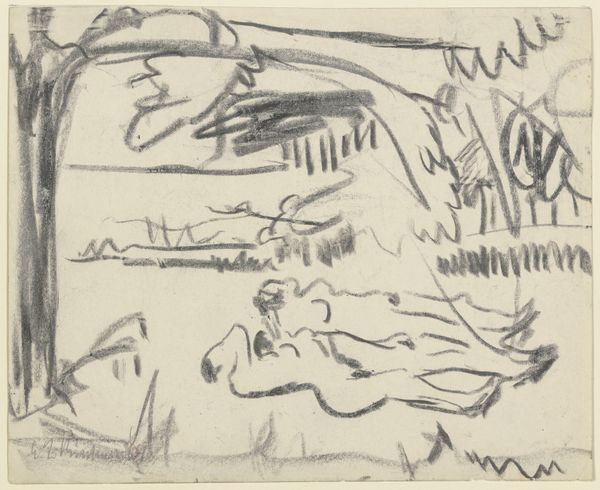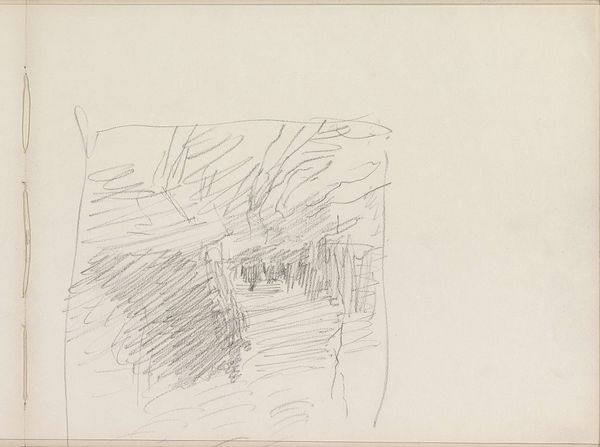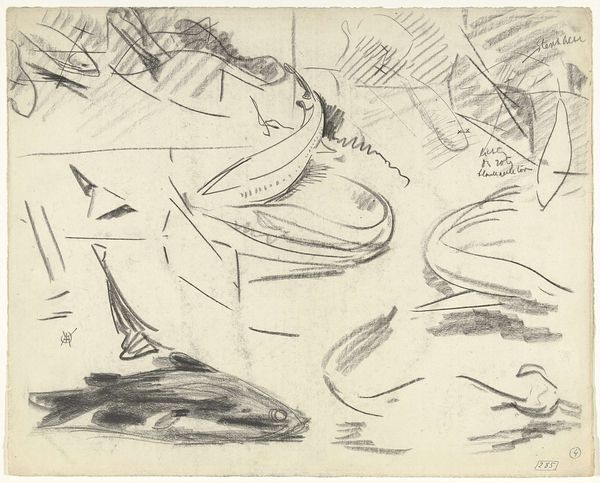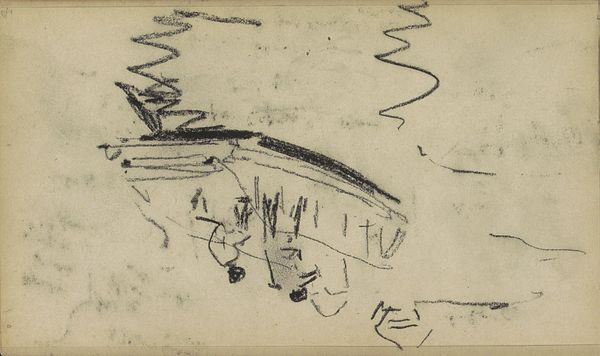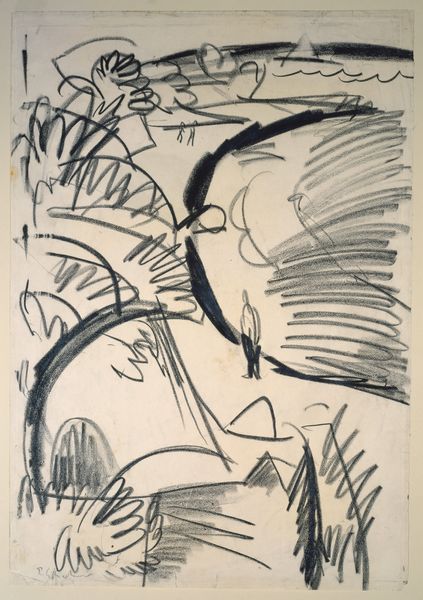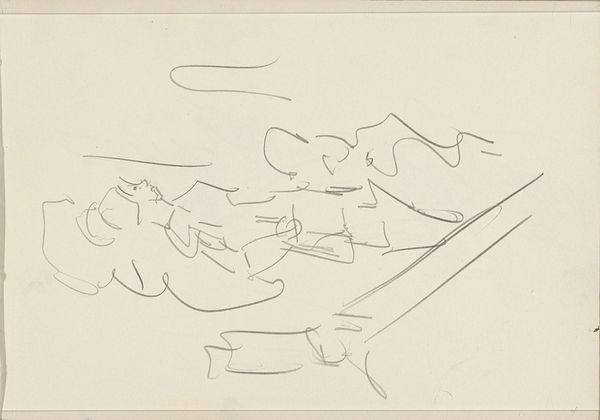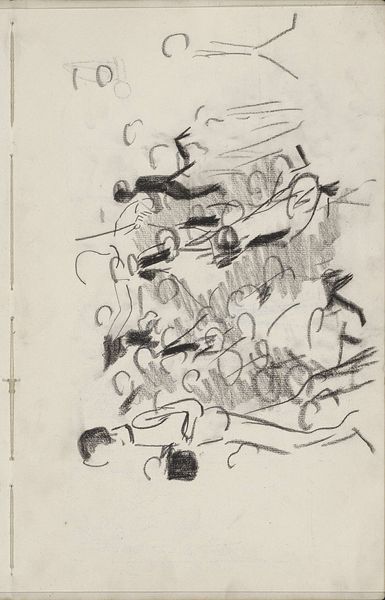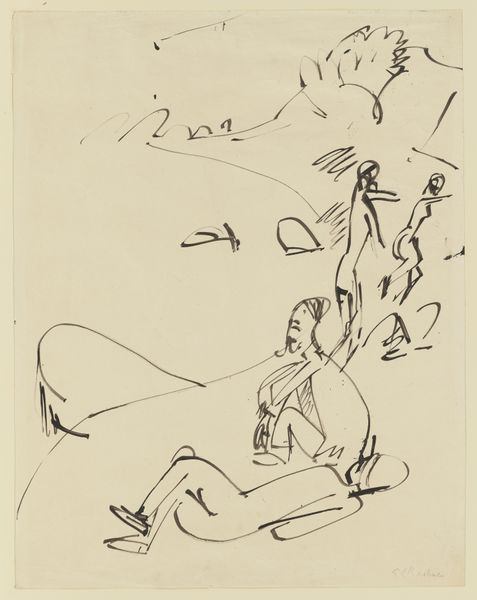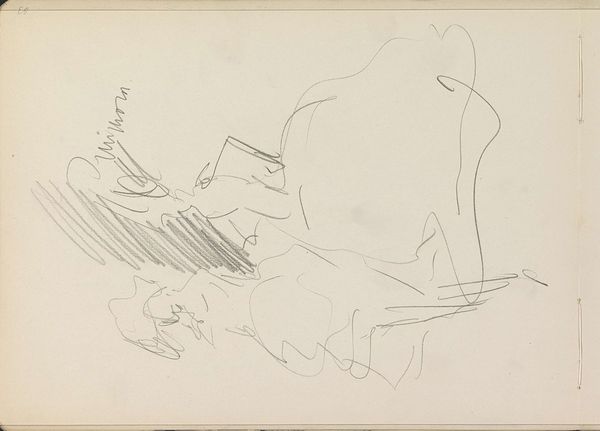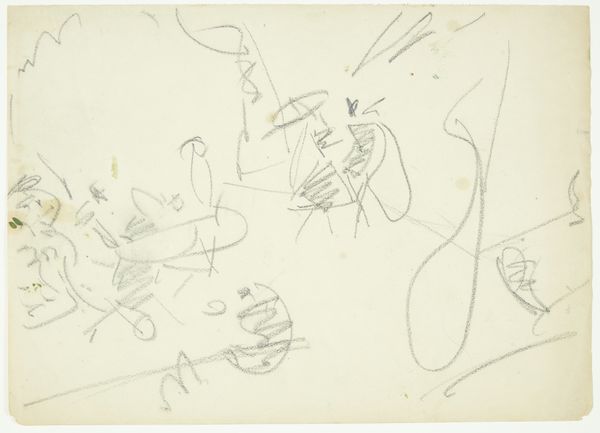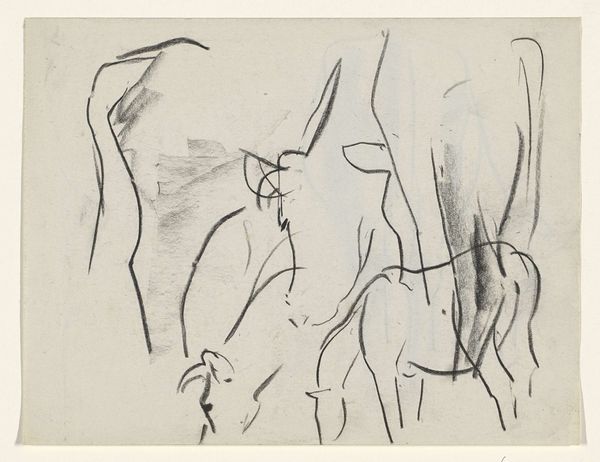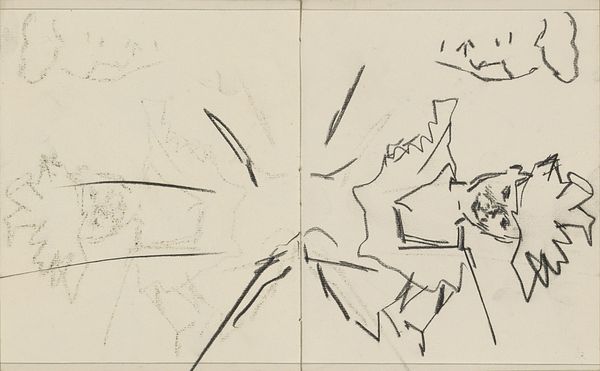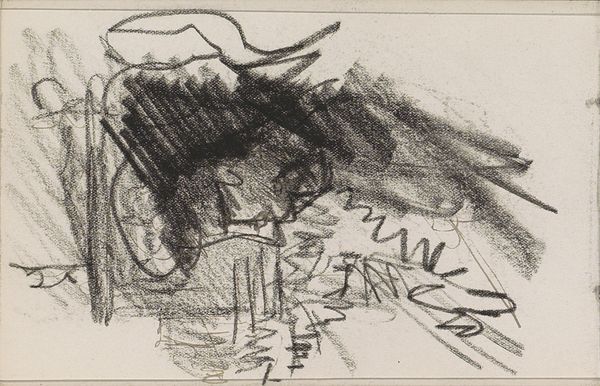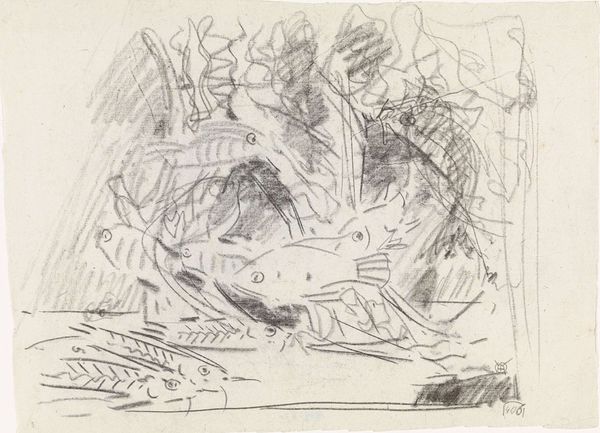
drawing, ink
#
drawing
#
ink drawing
#
pen sketch
#
landscape
#
figuration
#
personal sketchbook
#
ink
#
expressionism
#
nude
Copyright: Public Domain
Curator: This is Otto Mueller’s "Naked Girl Sitting by the Water," created in 1912. It's rendered in ink on paper. Editor: It has such a fleeting, almost melancholic mood, don’t you think? The way the figure is enveloped by these broad, expressive strokes…it feels unfinished and deeply intimate. Curator: Indeed. Mueller was, of course, a key figure in the Die Brücke movement, and you can clearly see how Expressionism shapes his visual language here. The lines are raw, almost urgent. Editor: It’s intriguing how the landscape seems to both cradle and consume the figure. Is the nude form, a fairly standard academic subject, a statement, or something else? Curator: Given the Expressionist context and Mueller's broader interest in portraying the human figure in harmony with nature, the naked figure becomes a vessel for expressing primal emotions. The contrast between the relatively detailed portrayal of her back and the abstract treatment of her features and of the surrounding brush underscores a feeling of detachment and interiority. Editor: The drawing reminds me of academic figure drawings combined with Fauvist landscape traditions that allow nature to swallow a traditional figurative approach to nude subjects. The ink application is intriguing as it emphasizes form but renders depth more flatly than academic or realistic styles might pursue. Curator: Interesting point. We often overlook how the socio-political realities influenced this Expressionist desire to connect with a simpler, more natural existence. Rapid industrialization and urbanization fueled a longing for an escape and search for authenticity. It also, naturally, fueled artists looking to make modern contributions distinct from previous artistic or political eras. Editor: This intimate sketch allows a sense of accessibility to an artist who found some inspiration in primitivism. The historical backdrop of cultural shifts towards primitivism also raises questions of orientalism or sexism to which an artwork like this cannot entirely be disassociated from even if not outwardly thematic of it. Curator: I find it compelling how Mueller used such simple materials, like ink on paper, to capture such complex emotions. Editor: It’s left me reflecting on the push and pull between inner experience and outer expression that marks so much of art from this period. Thank you for sharing your insights on this evocative piece!
Comments
stadelmuseum about 2 years ago
⋮
Otto Mueller first sojourned on the island of Fehmarn in 1908. From that time onwards, the motif of the nude figure in the outdoors dominated his artistic work. Here we see a girl sitting in the high grass of a large seaside meadow, her back turned towards us. The artist has zoomed in close, capturing the outlines of her body and the elements of the landscape with rapid brushstrokes in greyish purple. The simple, soft contours – for example those of her leg bent at the knee – resemble the curved lines denoting the individual blades of grass. As a way of showing the close bond between human beings and their natural surroundings, Mueller availed himself of a similar formal language for both.
Join the conversation
Join millions of artists and users on Artera today and experience the ultimate creative platform.
